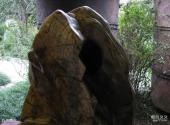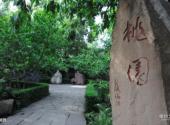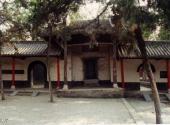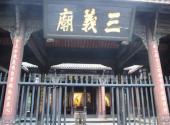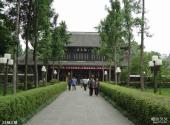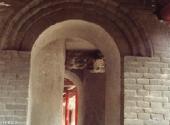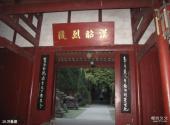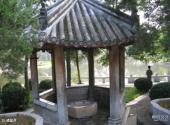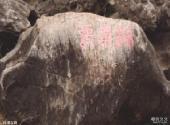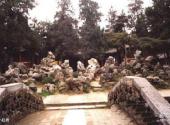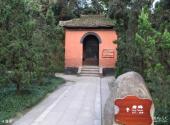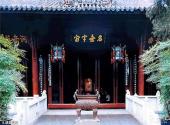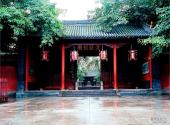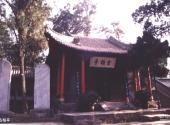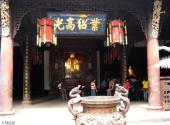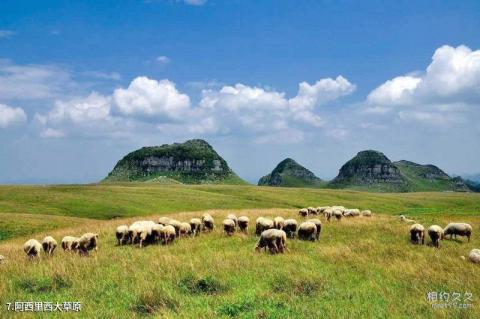
Scenic spot introduction:
Chengdu Wuhou Temple Museum is a national first-class museum. It is the only ancestral temple in China where monarchs and ministers jointly worship and the most famous memorial site for Zhuge Liang, Liu Bei and Shu Han heroes. It is also the most influential Three Kingdoms relics museum in the world. It began when Liu Bei Hui Mausoleum was built in 223 AD, and the Chengdu Wuhou Temple Museum was established in 1984. Wuhou Temple Museum is divided into three major areas: the Three Kingdoms Historical Relics Area, the Jinli Folklore Area, and the Three Kingdoms Cultural Experience Area, covering an area of 230 acres (150,000 square meters). The main building of Wuhou Temple in Chengdu is divided into five layers: the main gate, the second gate, Liu Bei Hall, the hall, and Wuhou Temple. They are strictly arranged on a central axis from south to north. On the west side is Liu Bei Mausoleum and its buildings. The second gate leads to Liu Bei Hall and the East and West Halls, and the passing hall leads to Zhuge Liang Hall and the East and West Wings, forming two sets of four-in-one architectural structures.Attractions distribution:
Chengdu Wuhou Temple is located in the south of Chengdu, covering an area of 150,000 square meters. It is divided into three parts: the Three Kingdoms Historical Relics Area, the Three Kingdoms Cultural Experience Area and the Jinli Folklore Area. It is the most famous Zhuge Liang and Liu Bei memorial site and the largest in the country. Three Kingdoms Relics Museum.The construction of Wuhou Temple began when Liu Bei's mausoleum was built in 223 AD, and was destroyed by war in the late Ming Dynasty. Except for Huiling, the existing main buildings were restored in the 11th year of Emperor Kangxi of the Qing Dynasty (1672 AD). The temple enshrines 50 statues of Shu Han figures such as Liu Bei and Zhuge Liang, which are of great cultural relic value and ornamental value. There are Jinli Folklore Area and Three Kingdoms Cultural Experience Area on the northeast and west sides of the ancient building complex respectively.
Scenic spot qualifications:
National 4A-level scenic spot, the first batch of national key cultural relics protection units, and a national first-class museumScenic spot features:
Photography, hiking, sightseeing, Three Kingdoms, Zhuge Liang, museums, monuments, cemeteriesTravel Notes of Travellers:
- Travel guide: Top ten most beautiful autumn scenery in China in September!
- Chuntian Fafa: The slow pace of Chengdu over a cup of tea
- Travel guide: Chengdu six-day free travel guide 2018
travelling guideline:
Wuhou Temple is open until 8 pm. Visitors can go later, stroll around the scenic spot, and then go to Jinli next to it to see the red lanterns and ancient buildings and feel the lively atmosphere at night.
The Jieyi Building in Jinli has special performances every afternoon and evening, but each person needs to pay for tea. In comparison, the afternoon show is more worthwhile.
Tour route:
Recommended one-day tour route in Chengdu:
Go to Wuhou Temple in the morning, take a break at noon, and go to Du Fu Thatched Cottage in the afternoon.
Best time to visit:
The best time to visit Chengdu is from March to June and September to November every year.
Shopping recommendations:
Sichuan peppercorns, Quanxing Daqu, Mengding tea, Phoenix tail cake, Sichuan mustard, bamboo silk porcelain body, Shu embroidery, Shu brocade, etc.
Scenic spot location:
China>Sichuan Province>Chengdu City>Wuhou District
How to get there:
Wuhou Temple Museum is located at No. 231 Wuhou Temple Street, Chengdu. You can directly reach the scenic spot by taking buses in Chengdu: 1, 10, 57, 82, 301, 334, 335, 503, 521, 901, 904, etc.
Scenic area map:
Click to expand the scenic area map
Wuhou Temple ticket price:
Tickets: 60 yuan.
Student ticket: 30 yuan.
Scenic area opening hours:
Peak season (July 1st - October 7th) 8:00-21:30
Low season (October 8th - June 30th of the following year) 8:00-18:30


